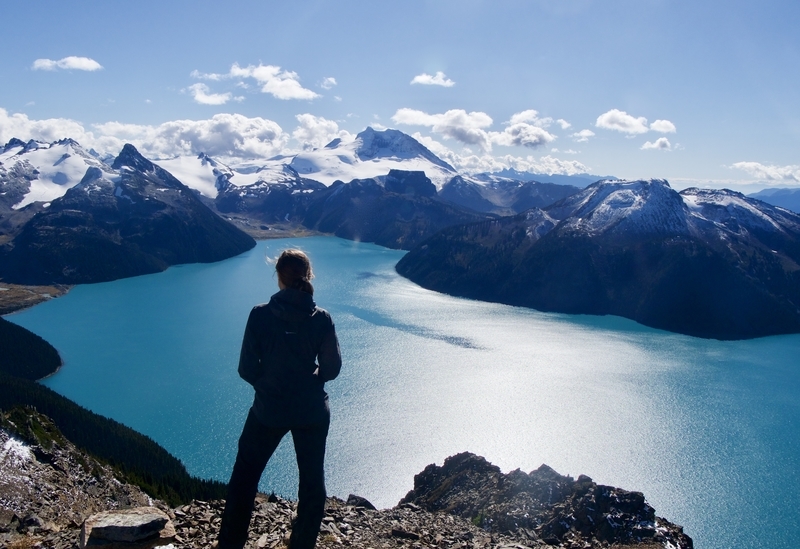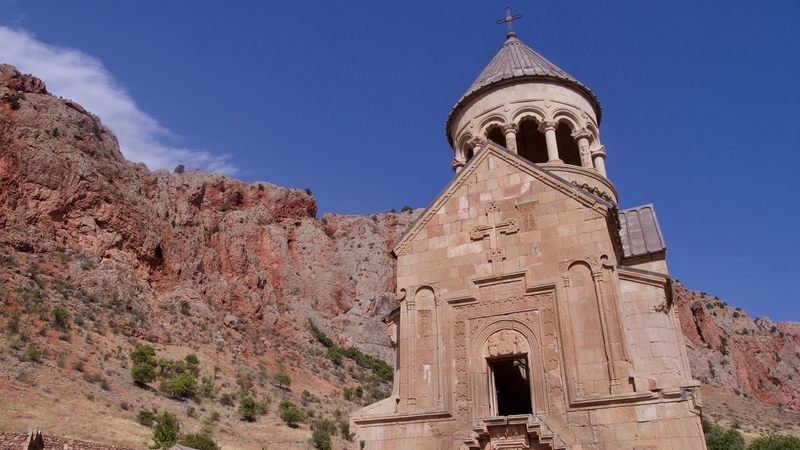
Three Day Armenia Itinerary: Top Things to Do
Armenia is a beautiful sliver of land that lies in the shadow of legendary Mount Ararat. Though it is home to varied landscapes and beautiful Orthodox churches, the country is better known for its tragic history than for its wealth of tourist attractions.
The Armenians haven’t had it easy. Over the centuries, their homeland has been continually chiseled away by the Ottomans, the Russians and the Persians. Even Mount Ararat—the country’s pride and joy—sits beyond Armenia’s border in Turkey.
Yet despite its tumultuous history, Armenians are resilient. They are deeply proud of their little country.
As they should be.
For what Armenia lacks in size or international acclaim, it makes up for with its rich history, its religious significance, and its natural beauty.
TOP THINGS TO DO IN ARMENIA
While word is getting out of nearby Georgia’s mountaintop monasteries and rugged isolated scenery, Armenia still flies under the tourist radar.
But it shouldn’t remain a secret for long, because the small Caucasus country is brimming with things to see and do.
Thanks to two comprehensive excursions that we booked through Envoy Hostel, Dan and I were able to pack many of Armenia’s top landmarks into a short three day itinerary.
The tours were top-notch, affordable, and informative.
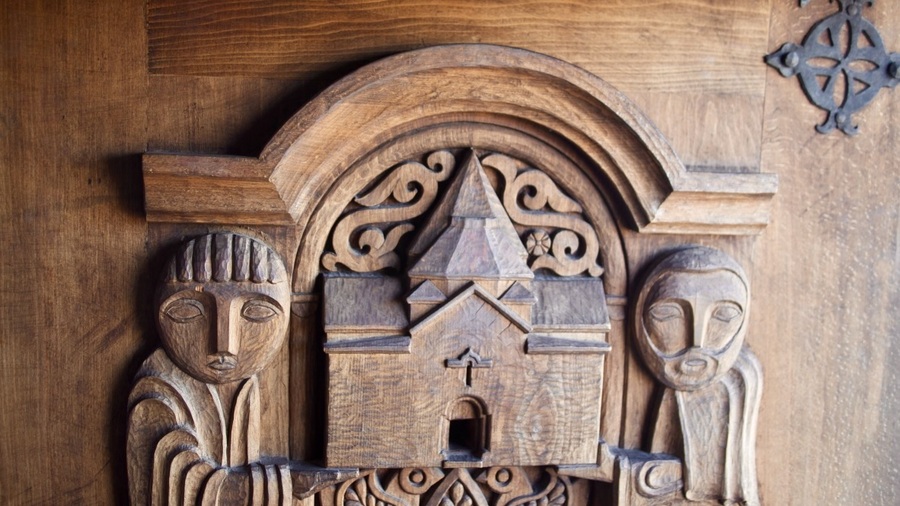
The first tour, Enlightened Armenia, brought us to some of the country’s most ancient religious monuments.
The second, Essential Armenia, ensured that we left the country without missing any of its most remarkable highlights.
If you’re not keen on joining a tour and wish to visit the country independently, you can use this three day Armenia itinerary as a guide.
ARMENIA ITINERARY DAY 1: YEREVAN
Yerevan, Armenia’s capital, is a vibrant city full of contradictions. While it lacks Tbilisi’s picturesque charm or Baku’s futuristic cityscape, Yerevan is an interesting blend of Europe meets USSR.
In Armenia’s capital city, chic outdoor cafes abound, as do angular Soviet-style apartment blocks. Thrown in the mix are elegant neoclassical buildings that give Yerevan the “Pink City” moniker.
Yerevan comes to life after sunset. In the evenings, the city’s main promenade buzzes with activity. Families fill the parks and plazas, young couples gather at the Cascade, and groups of friends saunter along tree-filled boulevards with shopping bags in tow.
-
VISIT REPUBLIC SQUARE
Republic Square lies at the heart of Yerevan. The square is home to stately rose-colored buildings, arranged around a large open plaza.
Originally called Lenin Square, the central plaza was once a marching ground for military parades.
Now, Republic Square is a gathering place for Yerevanites, young and old.
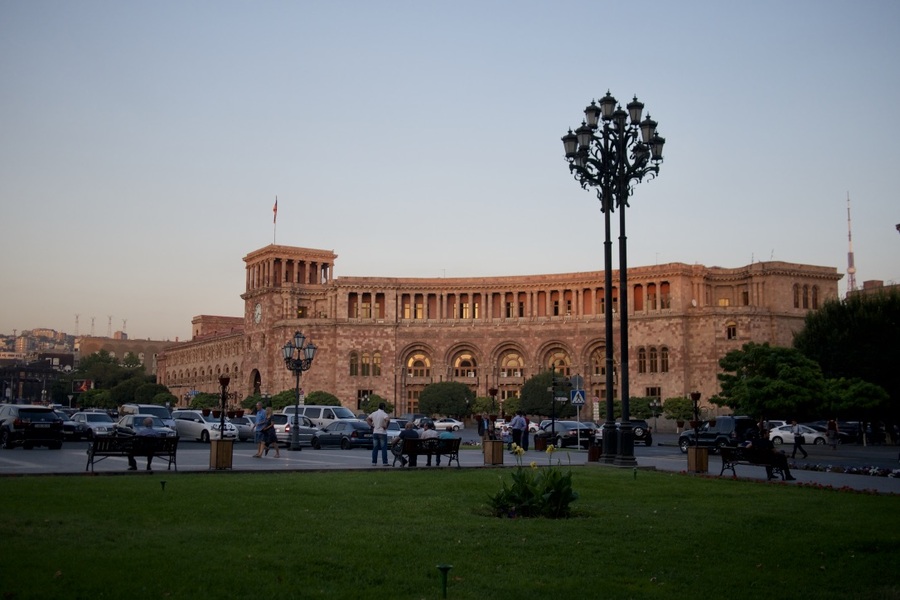
The History Museum of Armenia and the National Gallery are both located in Republic Square, alongside an ensemble of government buildings.
-
ADMIRE ART AT THE YEREVAN CASCADE
The Cascade is Yerevan’s most iconic monument. Located on the opposite side of the city from Republic Square, the massive limestone staircase links Yerevan’s city center with Victory Park.
The monument consists of five platforms and 572 steps. It is adorned with statues and sculptures.
Ascending the massive hillside staircase will give you close-up views of the Soviet-style stone reliefs, fountains and sculptures that decorate every tier.
Inside, galleries showcase different art and design exhibitions. Four of the galleries are free to visit, while others require a ticket.
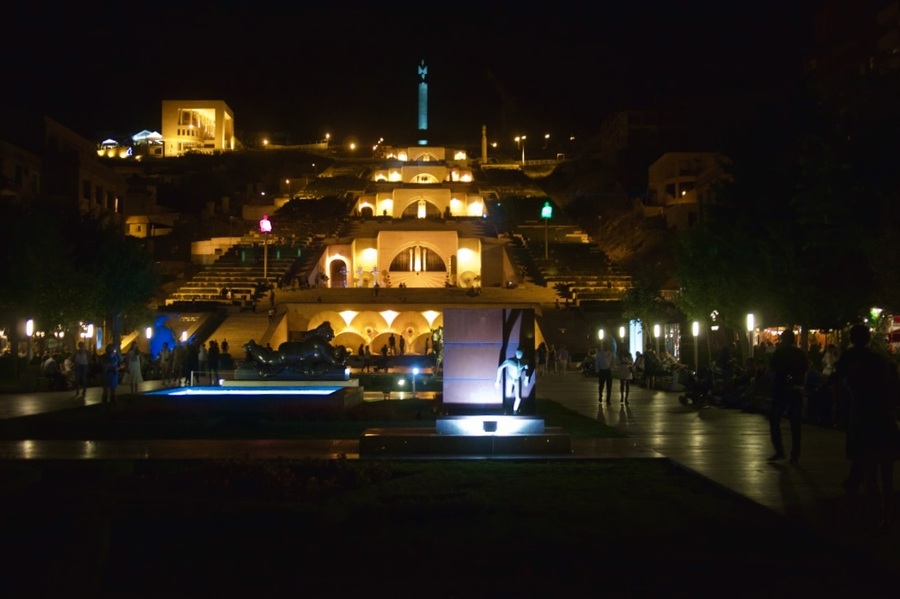
Climbing the Cascade is a top thing to do in Yerevan.
The Cascade’s north-south orientation forms part of the city center’s main axis and provides views over central Yerevan.
During the day, you’ll be rewarded with panoramic views of Mount Ararat’s twin peaks in the distance.
At night, the monument becomes an atmospheric place to gather with friends, gelato in hand.
-
VISIT THE ARMENIAN GENOCIDE MUSEUM
Yerevan—and Armenia as a whole—has a tragic history that is seemingly at odds with the country’s joyful present.
So if you’re looking to delve into the country’s turbulent past, you’ll want to spend a bit of time visiting the Armenian Genocide Museum.
The Armenian Genocide Museum sits on a hill overlooking Yerevan. Entrance to the museum is free of charge.
A visit to the museum is both a sobering experience and a necessary step in understanding the events that took place in 20th century Armenia.
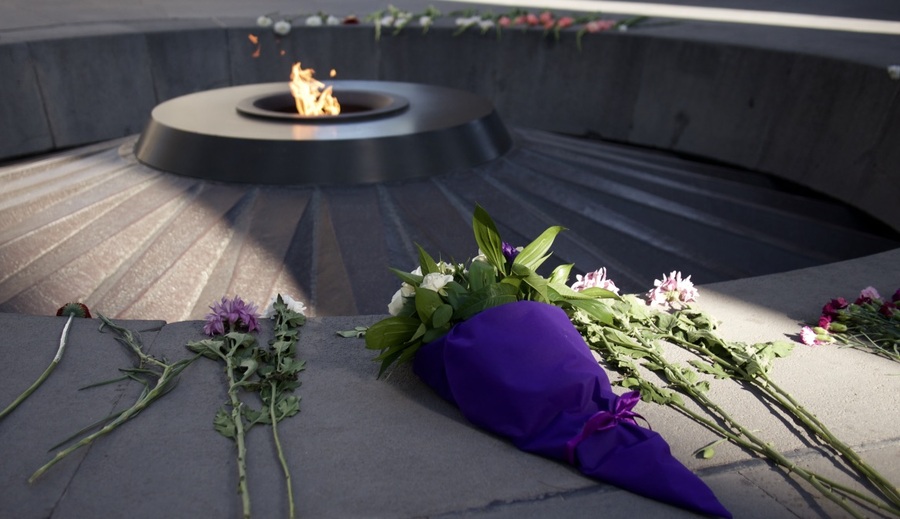
Between 1915 and 1917, over 1.5 million Armenian Christians were deported, forced into concentration camps and ruthlessly killed at the hands of Ottoman Turkey.
Though today the systematic annihilation of Christians in Eastern Anatolia is decried as a genocide by most scholars and heads of state, Turkey continues to justify the high death toll as an unfortunate consequence of warfare.
The museum’s thought-provoking exhibits come laced with a heavy dose of anti-Turkish bias.
Still, it is a powerful place to visit if you’re interested in learning more about the tiny country’s tumultuous past.
ARMENIA DAY 2: ENLIGHTENED ARMENIA TOUR
On our second day in Armenia, we joined Envoy Tours for a fantastic excursion to Armenia’s most important religious relics.
The Enlightened Armenia Tour focuses on the country’s religious heritage. It includes stops at Etchmiadzin, Khor Virap, Noravank, and the Areni Valley.
Armenia was the world’s first Christian nation.
And so a visit to the country would not be complete without a tour of its most significant religious monuments.
-
ECHMIADZIN MONASTERY: THE VATICAN OF ARMENIA
Echmiadzin is among the most important religious sites in the Caucasus.
The Vatican of the Armenian Apostolic Church, it is where Gregory the Illuminator (Armenia’s patron saint and the first head of Armenian Christianity) allegedly saw a beam of light fall to Earth in a divine vision.
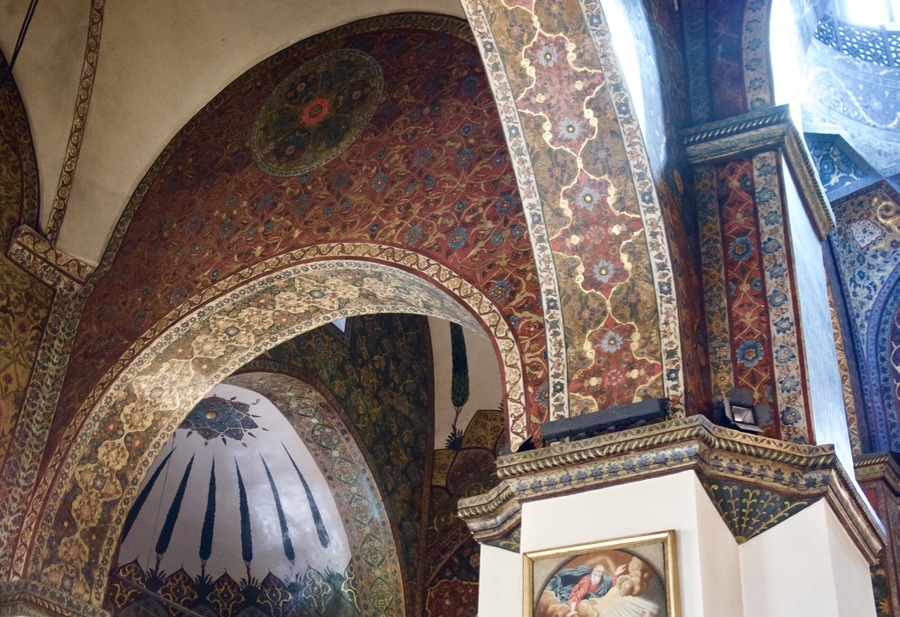
Etchmiadzin dates back to the early fourth century. Some consider it to be the oldest church in the world.
When Dan and I visited Etchmiadzin, much of the church’s exterior was covered in scaffolding. The interior, however, was well-preserved and freshly restored.
The church’s interior contains a mix of Persian and Byzantine styles that contrast with the stark and often minimalistic design of many of Armenia’s other Orthodox churches.
-
KHOR VIRAP MONASTERY
Khor Virap Monastery is a famous pilgrimage site nestled amongst Armenia’s verdant vineyards. The monastery was notable for holding Gregory the Illuminator in a subterranean dungeon for 13 years.
Khor Virap’s setting at the foot of Mount Ararat has made the monastery one of the most recognizable images of Armenia. The monastery is one of the most popular day trips from Yerevan.
When we visited, smog and dust obfuscated our view of the mountain.
But it wasn’t difficult to imagine the church’s picture-perfect setting on a clear day.
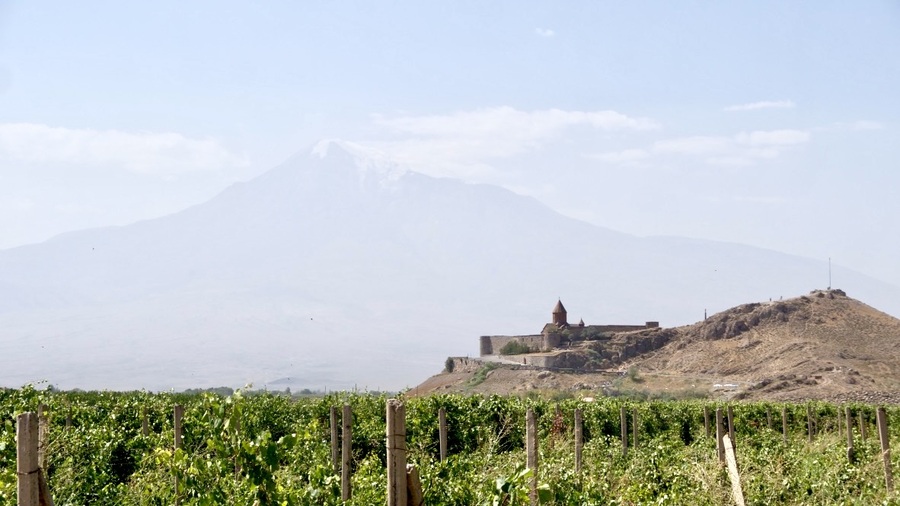
After climbing down into the dungeon of Khor Virap and trying to photograph Mount Ararat despite the dusty skies, we continued toward the Noravank Monastery.
-
NORAVANK MONASTERY
Set amongst the fiery cliffs of a red rock canyon, the Noravank Monastery is a masterpiece both for its architecture and for its dramatic setting.
Noravank was built in 1105 and last restored in the 1990s. The monastic complex has two main churches—Surb Astvatsatsin and Surb Karapet.

Surb Astvatsatsin has a narrow stone-made staircase that juts out from the face of the building and grants visitors access to the second floor of the church.
From the doorway of the second story, the views of the canyon walls are breathtaking.
-
ARENI VALLEY WINE TASTING
The road between the Noravank Monastery and Yerevan passes through the cradle of Armenia’s wine country. Most people are unlikely to associate Armenia with wine, but the country actually lays claim to the oldest wineries in the world—even older than the age-old wineries of nearby Georgia.
Near the village of Areni, archaeologists have unearthed an ancient winery that dates back over 6,000 years.
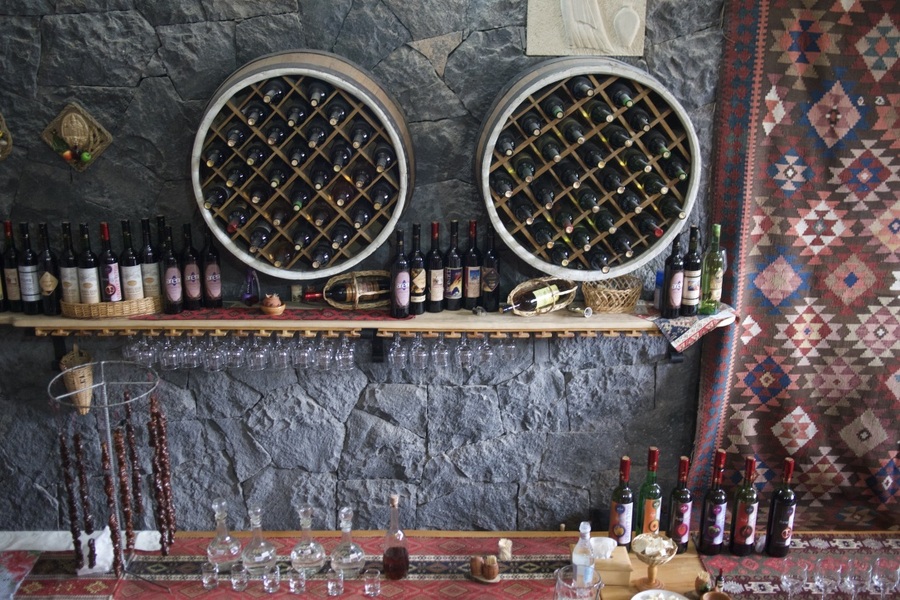
Today, modern wineries have mushroomed around the Areni Valley. We visited the Areni Wine Factory as the last stop on our tour and tried a variety of grape wines, in addition to wines made from cherries, pears and pomegranates.
DAY 3 ITINERARY: ESSENTIAL ARMENIA TOUR
It is impossible to see everything Armenia has to offer in three days, but joining Envoy Hostel for a second day trip ensured that Dan and I would leave the country having seen most (though certainly not all) of Armenia’s main attractions.
The Essential Armenia tour includes Lake Sevan, the Noratus Cemetery, the Geghard Monastery, and Garni Temple.
-
LAKE SEVAN AND THE SEVANAVANK MONASTERY
Our first stop on the Essential Armenia tour was the charcoal-colored Sevanavank Monastery. With glimmering Lake Sevan as its backdrop, Sevanavank is one of Armenia’s most picturesque churches.
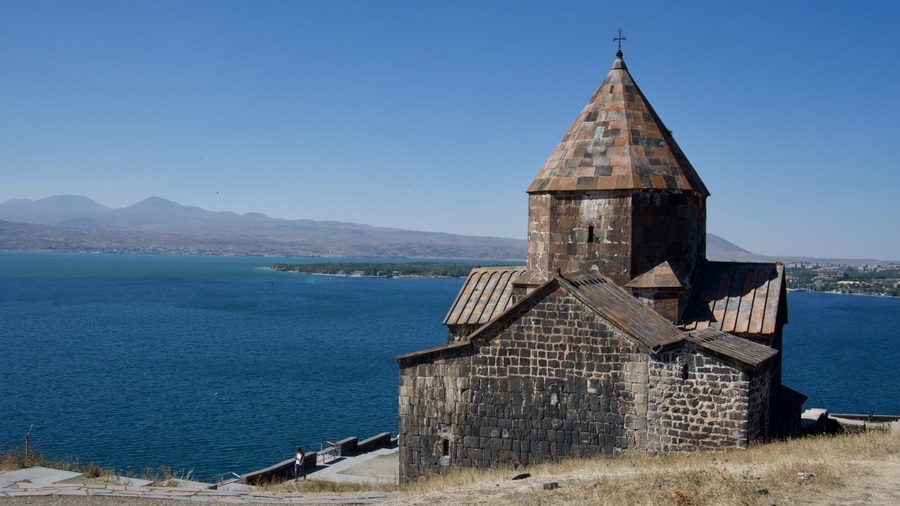
Lake Sevan is the biggest lake in the Caucasus and one of the largest high-altitude lakes in the world.
Set 1900m above sea level, the colors of the lake’s vast expanse range from cobalt to dark blue, to a million shades in between.
-
NORATUS CEMETERY
From Lake Sevan, we headed toward the Noratus Cemetery. The Cemetery contains the largest collection of decorative khachkars in the world.
Khachkars, also known as cross stones, are memorial plaques with intricate rosette and interlace motifs. Most khachkars contain beautifully-designed crosses. Some, however, depict scenes of weddings and farm life that are reminiscent of the tombstones in Sapanta’s Merry Cemetery.
Many of the cemetery’s khachkars are over 1,000 years old.
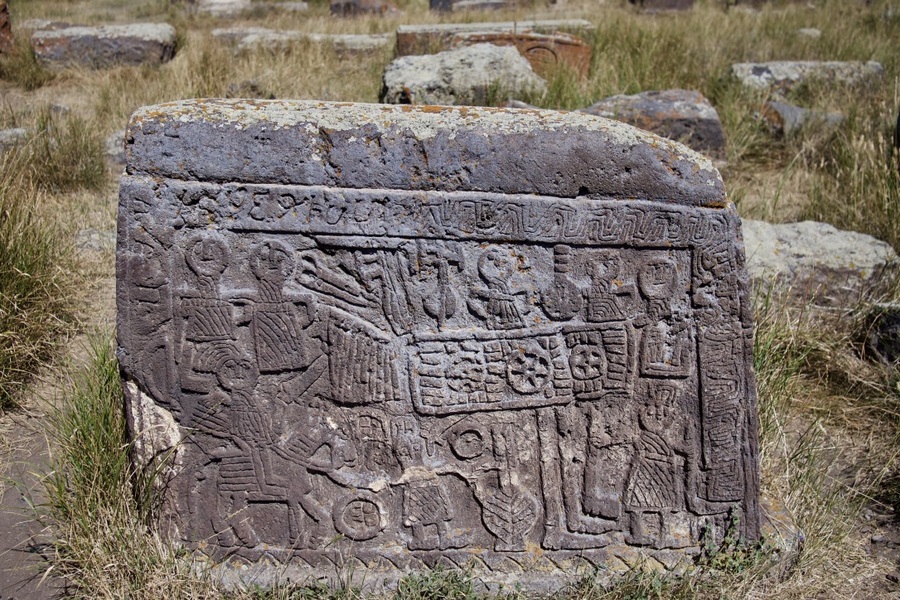
We stopped for lunch in a local home near the Noratus Cemetery, before continuing onward to Geghard–a UNESCO World Heritage Site and one of Armenia’s most intriguing destinations.
-
GEGHARD MONASTERY
The Geghard Monastery sits in a landscape of great natural beauty, surrounded by towering cliffs at the entrance to the Azat Valley.
One of the most beautiful monasteries in Armenia, Geghard contains a number of churches and tombs. Some of the churches within the monastic complex are entirely dug out of the cliff rocks and intricately engraved. Others are little more than caves.
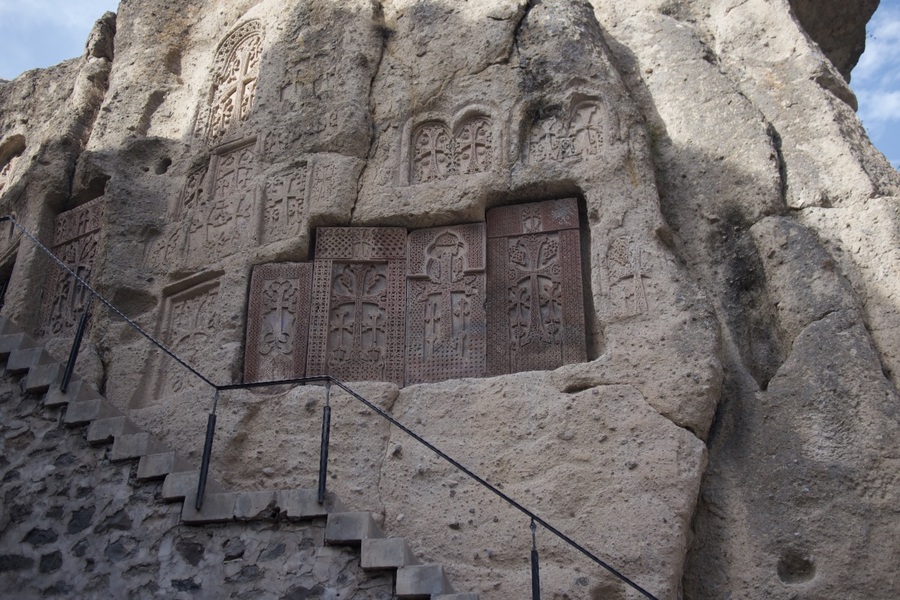
The main church at Geghard was built in the 1200s and carved from solid rock. It contains multiple chambers that lie in a crucifix-shaped floorplan.
This rock-hewn church—reminiscent of Petra in some ways—3illustrates the very peak of Armenian Medieval architecture.
-
GARNI HELLENISTIC TEMPLE
After visiting the intriguing monastery at Geghard, our tour stopped at the Hellinistic Garni Temple.
Garni is unlike any other place in Armenia.
Here, in the corner of the South Caucasus, sits a temple that looks as though it belongs 1,500 miles away at the Acropolis of Athens. It is the only remaining structure of its kind in the former Soviet Union.
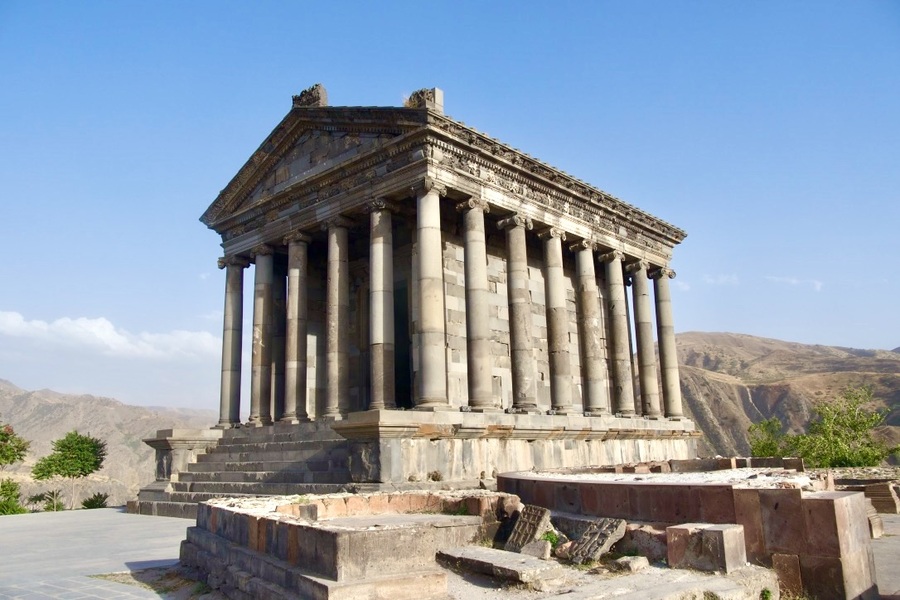
The Garni Temple is Armenia’s most famous pre-Christian symbol and the center of Armenia’s small neopagan community.
In a country that holds such a deep sense of pride in its Christian heritage, the Pagan temple seems largely out of place.
WHERE TO STAY IN YEREVAN
We stayed at the Envoy Hostel during our trip to Armenia. The hostel set us up with two remarkable tours that brought us to some of the most beautiful places in Armenia.
If hostel-going isn’t your scene, however, you’ll find plenty of other accommodation options in Yerevan. Hotels in Armenia are quite affordable by international standards. Even the city’s more luxurious offerings fall under the $100 per night price range.
For a mid-range hotel option, the Elysium Gallery Hotel ticks all the boxes—clean modern rooms, a central location, and a reasonable price point.
If you’re looking for top-end accommodation, the Hotel Alexander offers a luxurious spa and some of the best rooms in town.
BEST TIME TO VISIT ARMENIA
Armenia’s climate consists of cold winters and hot, dry summers. Weather-wise, the best time to visit Armenia is during the shoulder months of April-May and September-October.
During the months of June-August, temperatures regularly surpass 100 degrees farenheit.
*****
Armenia certainly isn’t a common destination for travelers, and getting around can be tricky for those who don’t speak Russian.
Most tourists we encountered during our three days in Armenia were either incredibly well-traveled, or Armenian-Americans who were visiting the country in hopes of reconnecting with the land of their ancestors.
And I understand. The country is rarely associated with its tourism potential.
But with the towering mountains of Georgia beckoning travelers next door, I’m confident that a small trickle of visitors will make their way to Armenia, too.
And when they do, word will get out about Armenia’s beautiful monasteries and natural attractions.
